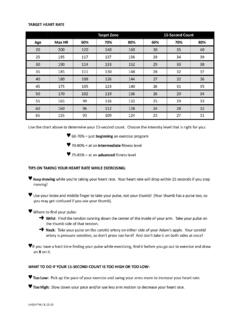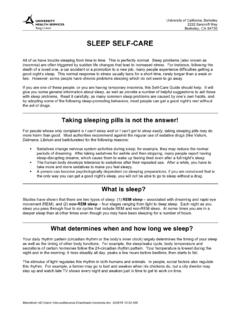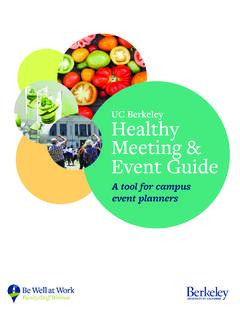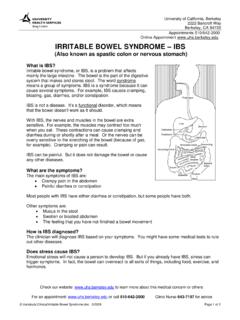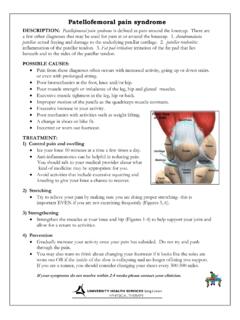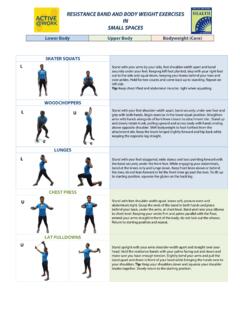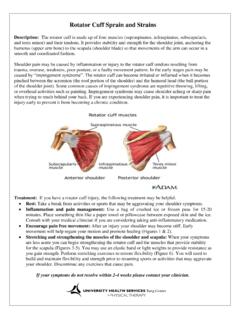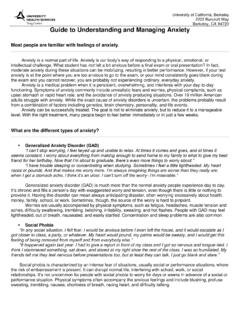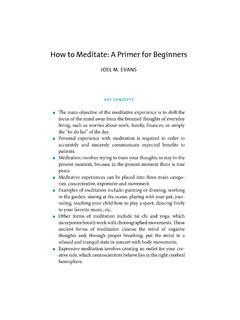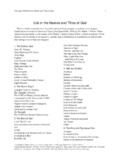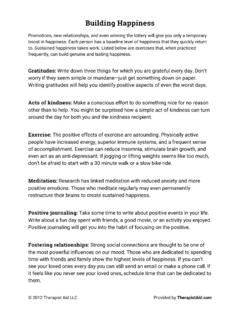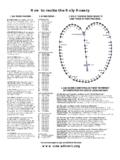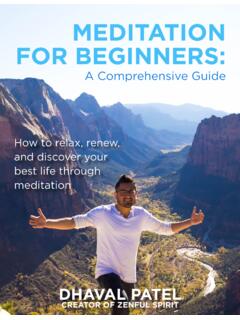Transcription of Five Steps to Mindfulness - University of California, Berkeley
1 Five Steps to Mindfulness By Thich Nhat Hanh Our true home is not in the past. Our true home is not in the future. Our true home is in the here and the now. Life is available only in the here and the now, and it is our true home. Mindfulness is the energy that helps us recognize the conditions of happiness that are already present in our lives. You don t have to wait ten years to experience this happiness. It is present in every moment of your daily life. There are those of us who are alive but don t know it. But when you breathe in, and you are aware of your in-breath, you touch the miracle of being alive.
2 That is why Mindfulness is a source of happiness and joy. Most people are forgetful; they are not really there a lot of the time. Their mind is caught in their worries, their fears, their anger, and their regrets, and they are not mindful of being there. That state of being is called forgetfulness you are there but you are not there. You are caught in the past or in the future. You are not there in the present moment, living your life deeply. That is forgetfulness. The opposite of forgetfulness is Mindfulness . Mindfulness is when you are truly there, mind and body together. You breathe in and out mindfully, you bring your mind back to your body, and you are there.
3 When your mind is there with your body, you are established in the present moment. Then you can recognize the many conditions of happiness that are in you and around you, and happiness just comes naturally. Mindfulness practice should be enjoyable, not work or effort. Do you have to make an effort to breath in? You don t need to make an effort. To breathe in, you just breathe in. Suppose you are with a group of people contemplating a beautiful sunset. Do you have to make an effort to enjoy the beautiful sunset? No, you don t have to make any effort. You just enjoy it. The same thing is true with your breath. Allow your breath to take place.
4 Become aware of it and enjoy it. Effortlessness. Enjoyment. The same thing is true with walking mindfully. Every step you take is enjoyable. Every step helps you to touch the wonders of life, in yourself and around you. Every step is peace. Every step is joy. That is possible. During the time you are practicing Mindfulness , you stop talking not only the talking outside, but the talking inside. The talking inside is the thinking, the mental discourse that goes on and on and on inside. Real silence is the cessation of talking of both the mouth and of the mind. This is not the kind of silence that oppresses us.
5 It is a very elegant kind of silence, a very powerful kind of silence. It is the silence that heals and nourishes us. Mindfulness gives birth to joy and happiness. Another source of happiness is concentration. The energy of Mindfulness carries within it the energy of concentration. When you are aware of something, such as a flower, and can maintain that awareness, we say that you are concentrated on the flower. When your Mindfulness becomes powerful, your concentration becomes powerful, and when you are fully concentrated, you have a chance to make a breakthrough, to achieve insight.
6 If you meditate on a cloud, you can get insight into the nature of the cloud. Or you can meditate on a pebble, and if you have enough Mindfulness and concentration, you can see into the nature of the pebble. You can meditate on a person, and if you have enough Mindfulness and concentration, you can make a breakthrough and understand the nature of that person. You can meditate on yourself, or your anger, or your fear, or your joy, or your peace. Anything can be the object of your meditation, and with the powerful energy of concentration, you can make a breakthrough and develop insight. It s like a magnifying glass concentrating the light of the sun.
7 If you put the point of concentrated light on a piece of paper, it will burn. Similarly, when your Mindfulness and concentration are powerful, your insight will liberate you from fear, anger, and despair, and bring you true joy, true peace, and true happiness. When you contemplate the big, full sunrise, the more mindful and concentrated you are, the more the beauty of the sunrise is revealed to you. Suppose you are offered a cup of tea, very fragrant, very good tea. If your mind is distracted, you cannot really enjoy the tea. You have to be mindful of the tea, you have to be concentrated on it, so the tea can reveal its fragrance and wonder to you.
8 That is why Mindfulness and concentration are such sources of happiness. That s why a good practitioner knows how to create a moment of joy, a feeling of happiness, at any time of the day. First Mindfulness Exercise: Mindful Breathing The first exercise is very simple, but the power, the result, can be very great. The exercise is simply to identify the in-breath as in-breath and the out-breath as out-breath. When you breathe in, you know that this is your in-breath. When you breathe out, you are mindful that this is your out-breath. Just recognize: this is an in-breath, this is an out-breath.
9 Very simple, very easy. In order to recognize your in-breath as in-breath, you have to bring your mind home to yourself. What is recognizing your in-breath is your mind, and the object of your mind the object of your Mindfulness is the in-breath. Mindfulness is always mindful of something. When you drink your tea mindfully, it s called Mindfulness of drinking. When you walk mindfully, it s called Mindfulness of walking. And when you breathe mindfully, that is Mindfulness of breathing. So the object of your Mindfulness is your breath, and you just focus your attention on it.
10 Breathing in, this is my in-breath. Breathing out, this is my out-breath. When you do that, the mental discourse will stop. You don t think anymore. You don t have to make an effort to stop your thinking; you bring your attention to your in-breath and the mental discourse just stops. That is the miracle of the practice. You don t think of the past anymore. You don t think of the future. You don t think of your projects, because you are focusing your attention, your Mindfulness , on your breath. It gets even better. You can enjoy your in-breath. The practice can be pleasant, joyful. Someone who is dead cannot take any more in-breaths.
